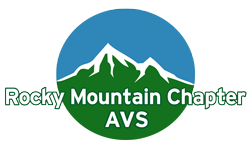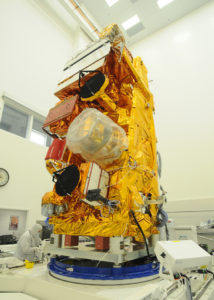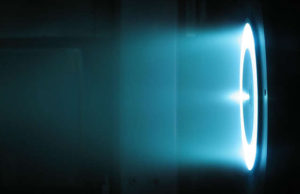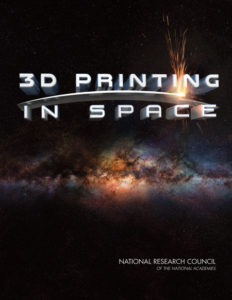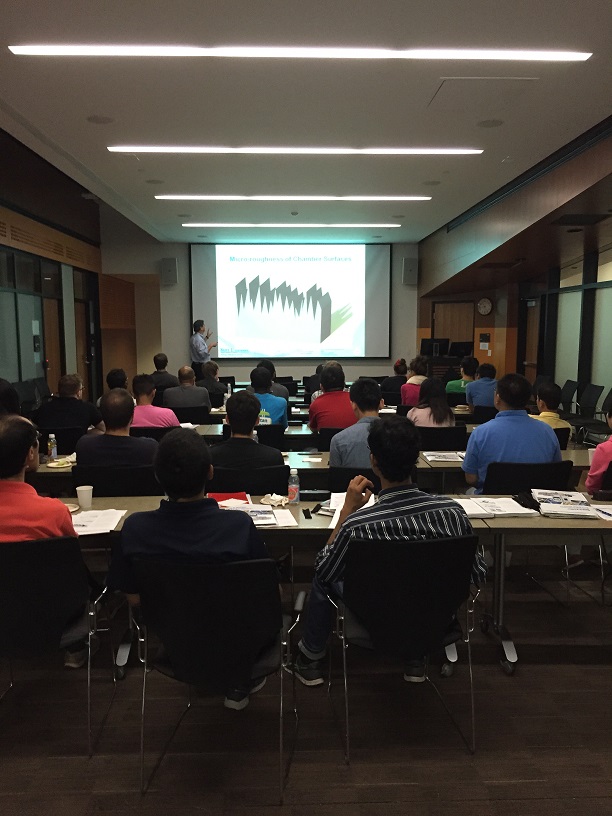Space: The Final Vacuum Frontier
Annual Symposium of the Rocky Mountain ChapterRead Abstracts in Tabs for the two sessions (both start at 8:30AM, only Space in the afternoon). General Schedules are below the abstracts. The Program flyer can be downloaded HERE.
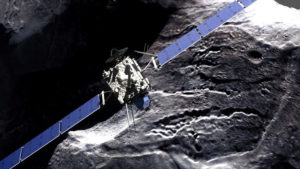 Up Close and Personal with a Comet: The ESA/Rosetta Mission
Up Close and Personal with a Comet: The ESA/Rosetta Mission
Padma A. Yanamandra-Fisher, Space Science Institute, Boulder, Colorado
The ESA/Rosetta mission, launched in 2004, rendezvoused with comet 67P/Churyumov-Gerasimenko (CG, or Chury) in August 2014. Since then, with an orbiter escorting the comet on its journey around the sun, and a lander (Philae) that bounced multiple times on the comet surface, the Rosetta mission has provided new vistas of cometary surface that surpasses prior data. Although on its seventh passage through the inner solar system, the comet is not its brightest in the current passage. Global ground-based campaigns, involving professional and amateur observers from 2014 – 2016, in support of the mission and providing a complementary far-distance information of the comet in contrast to the near-field, high resolution images of the comet. The ESA/Rosetta mission will come to an end on 30 September 2016, with a scheduled low-speed impact of the orbiter onto the comet surface. In this talk, I will discuss the engineering milestones, scientific discoveries made by the mission, compare with other cometary encounters, and the future of cometary science.
Environmental Intelligence from Space
Paula Wamsley, Ball Aerospace
Environmental Intelligence from Space could also be called Mission to Planet Earth. Earth is our home planet and so far, it is the only planet known to support life. Earth has been our home since the dawn of human history. Historically the Earth has both sustained us via supplies of food, water, and building material but it has also been a threat. Severe storms, wild fires, earthquakes, and tsunamis are just a few of the natural hazards that humans continue to face on an almost day to day basis. As science and engineering advanced, the ability of humans to make a global rather than just local impact on the environment has increased. In order to ensure that we are able to continue to access the necessary resources and avoid the loss of life potential in natural disasters, modern research is focused on Earth as a system. The Earth system is very complex and advanced technologies and engineering capabilities are needed to both improve our understanding of how the system works as well as provide status data to policy and decision makers. A good example of science to the rescue is the understanding of the causes of the ozone hole (science) and the implementation of the Montreal Protocol (policy) that is enabling the restoration of Earth’s protective layer.
This talk will provide a glimpse into the wide variety of Earth observation applications supported by Ball Aerospace. The focus will be on new observations. Examples will highlight some of the advanced technologies used to achieve historical advances as well as R&D and technology maturation that is underway for emerging observations.
Ion Sources on Spacecraft: Ion and Hall-Effect Thrusters
Cody Farnell, cody.farnell@plasmacontrols.com
Ion thrusters and Hall-effect thrusters are the two most common electric propulsion thrusters used on spacecraft, and have many similarities to the ion sources used in vacuum processing. Here, we examine how the devices operate, their similarities and differences to the ion sources and end-Hall ion sources found in etching and coating systems, their use on satellites and deep-space explorers, and highlight recent research into improving their efficiency, thrust, and lifetime. We pay special attention to our work on the hollow cathode electron sources used to create plasmas and neutralize environments, the ion optics used on gridded sources, and the relationship of 3D printing to certain components.
3D Printing in Space: Moving Additive Manufacturing to Earth Orbit
MICHAEL T. McGRATH CU Boulder, Laboratory for Atmospheric and Space Physics
Additive manufacturing (AM), often referred to as “3D printing,” is argued in the press to be bringing out about a manufacturing revolution. AM itself is not new, but the combination of computer-aided design technologies with economical AM systems is opening up the design/development process to a wide user base – perhaps most notably the global “maker culture”. AM is driving materials science to produce materials with new and unique material properties . Conceptually AM creates a new approach to manufacturing underpinned by an entirely new way of approaching the design process. Recently the Air Force Space Command asked the National Research Council (NRC) to conduct a study of the prospects for the use of additive manufacturing in space. This talk by one of the study authors will discuss insights, observations and opportunities revealed in examining the potential use of AM technology for manufacturing spacecraft in the space environment.
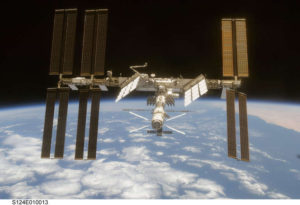 Protecting human life in the vacuum of space: challenges and solutions
Protecting human life in the vacuum of space: challenges and solutions
Professor David Klaus, CU Boulder Aerospace Engineering Sciences
Surviving unprotected in the near vacuum conditions of spaceflight is limited to seconds, possibly a minute and a half if a return to tolerable pressure is achieved. Without intervention, a series of events ranging from paralysis to lung decompression and rapid water vapor evaporation quickly lead to unconsciousness and death. The underlying cause of death stems from a process called ebullism, where exposed body fluids including saliva on the tongue, tears in the eyes, and alveoli within the lungs begin to vaporize and form bubbles, combined with hypoxia, or the deprivation of oxygen. Water vapor pressure at body temperature of 37° C is 47 mm Hg. This atmospheric pressure is reached at an altitude of approximately 19 km, well below the 100 km onset of space, and is referred to as the Armstrong limit. Other concerns that begin to occur at even lower altitudes include hypocapnia, or reduced carbon dioxide in the bloodstream resulting from hyperventilation, and decompression sickness, where gas bubbles form inside body tissues and fluids, particularly in the blood, as well as the accompanying temperature extremes that are experienced in space depending on radiative heat transfer view factors. Ultimately, each of these detrimental parameters are overcome by the spacecraft cabin and life support system. This talk will address these and other fundamental atmospheric requirement drivers in terms of human physiological needs and summarize technologies capable of maintaining a habitable environment for the crew. Transitioning from the vehicle into a lower pressure spacesuit presents additional unique engineering and operational challenges. Finally, related thermal control aspects of insulation, evaporation, sublimation and radiation used to regulate temperature in the habitat as well as a spacesuit, will also be discussed.
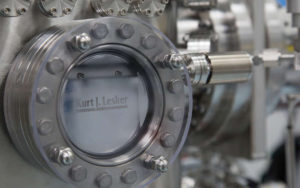 Precision Measurement of Pressure in Space Simulation Systems with High Gas Loads
Precision Measurement of Pressure in Space Simulation Systems with High Gas Loads
J.R. Gaines, Kurt Lesker
Systems and components bound for outer space must be tested in space-like conditions such as low pressure, on the order of 10-6 Torr, and high and low temperatures (- 180o C to + 150o C), in order to insure their reliable operation once deployed. These simulation systems must also be able to manage enormous gas loads introduced by the samples being tested. Gas loads can be due to classic desorption from an outgassing sample or, in the case of devices such as plasma jets, ‘fuels’ such as argon or xenon which are ionized and used for thrust. Chambers typically have a minimum volume of a cubic meter but are often much larger. Sensors and instrumentation to measure vacuum are not typically designed to work in hostile conditions such as ‘dirty’ gas loads. In this talk some solutions for pressure measurement under conditions required to simulate space conditions, such as high outgassing rates and close proximity to plasmas will be discussed.
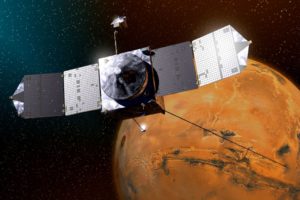 Discoveries from NASA’s MAVEN Mission to Mars
Discoveries from NASA’s MAVEN Mission to Mars
Nick Schneider, CU Boulder, Laboratory for Atmospheric and Space Physics
NASA’s MAVEN mission set out to figure out how Mars could have lost 99% of its atmosphere. This change transformed Mars from a warm, wet and possibly habitable world to a cold dry desert planet inhabited solely by robots. So, after more than a year and more than 4000 Mars orbits, “Are we there yet???”. This talk will recap MAVEN’s primary mission and its findings about how the Sun and solar wind have stripped away Mars’ atmosphere over billions of years. You’ll also hear some inside stories of the adventures this Colorado spacecraft had along the way: a near miss with a comet, a spectacular meteor shower, some strange aurora, daring “deep dips” skimming through the atmosphere – and probably a thing or two we’ve discovered since this was written.
Introduction to Vacuum Technology
J.R. Gaines, Kurt J. Lesker Company
This class is designed to introduce the student to basic concepts in vacuum technology. Subjects covered include the ideal gas law, molecular flow in various vacuum regimes, characteristics of gas composition at various molecular densities, general principles of gas-solid interactions, vacuum pump technology and the impact of fundamental design decisions and operating practices on vacuum system performance. It is intended for people who are new to vacuum or may not have any formal training. The student should achieve a general understanding of vacuum technology as a foundation for further training in vacuum system design and thin film deposition. This course also includes several short quizzes to better enable the learning process. Students who attend the class can receive a personalized certificate of attendance signed by the course instructor.
- Technical resources for vacuum technology
- Pressure and molecular density
- Adsorption, Desorption, Diffusion and Permeation
- Gas–Solid Interactions
- Flow Regimes
- Conductance
- Vacuum Pump Technologies, Pumping Speed and Pump Throughput
- Detecting leaks in vacuum systems
- Seals for vacuum systems
- Gas Load
- Outgassing
- Surface finishes for vacuum applications
- Calculations of ultimate base pressure of a vacuum system
| General Schedule | |
|---|---|
| 7:45 AM | Registration begins |
| 8:30–11:30 | Oral Technical Sessions: Space & Vacuum Tutorial |
| 10:00 AM | Vendor Exhibit opens |
| 11:30–1:30 | Free Lunch in the Exhibit Area |
| 1:30–3:30 | Oral Session continued: Space |
| 3:30 PM | Poster Session opens |
| 3:30–6:00 | Vendor Exhibit and Student Poster Session |
| Authors will be present from 4:00 PM to 5:15 PM | |
| 5:30 PM | Student Poster Winners announced |
| Space: The Final Vacuum Frontier | |
|---|---|
| 8:30 – 9:10 | Up Close and Personal with a Comet: The ESA/Rosetta Mission, Padma A. Yanamandra-Fisher, Space Science Institute |
| 9:10 – 9:50 | Environmental Intelligence from Space, Paula Wamsley, Ball Aerospace |
| 9:50 – 10:10 | Break |
| 10:10 – 10:50 | Ion Sources on Spacecraft: Ion and Hall‐Effect Thrusters, Cody Farnell, Plasma Controls, LLC |
| 10:50 –11:30 | 3D Printing in Space: Moving Additive Manufacturing to Earth Orbit, Mike McGrath, CU Boulder Laboratory for Atmospheric and Space Physics |
| 11:30 –1:30 | Lunch (included with pre-registration) |
| 1:30 –2:10 | Protecting Humans from the Vacuum Environment of Space, David Klaus, CU Boulder Aerospace Engineering Sciences |
| 2:10 –2:50 | Precision Measurement of Pressure in Space Simulation Systems with High Gas Loads & Introduction to Vacuum Science (Session II), J.R. Gaines, Kurt J. Lesker Company |
| 2:50 –3:30 | Discoveries from NASA’s MAVEN Mission to Mars, Nick Schneider, Laboratory for Atmospheric and Space Physics |
| Free Vacuum Tutorial | |
| 8:30 | Introduction to Vacuum Technology, J.R. Gaines, Kurt J. Lesker Company |
